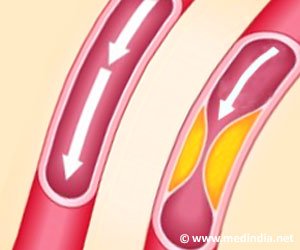Fresh Insights into Lipids

But despite their importance, lipids have traditionally been among the hardest biomolecules to study because of the diversity of their molecular structures, which are not determined by the well-defined building blocks and simple rules that govern DNA, RNA, and proteins. And this diversity means that, unlike building and analyzing genome and transcriptome databases, lipids require more customized analytic procedures.
Because of this, it is very difficult to study either the physiological function of a vast majority of lipid species or the way they are so precisely regulated in cells. But while lipidomics technologies are progressing, translating their findings into medical applications and introducing them into clinical laboratories is still a considerable challenge.
Advertisement
This is the challenge that the team of Johan Auwerx at EPFL, in collaboration with Dave Pagliarini’s group at the University of Wisconsin-Madison took on by measuring almost 150 lipid species in the blood and liver of mice. They also followed this up by identifying the genetic regulators of each lipid species as well as their physiological functions.
The researchers used systems genetics approaches to combine the lipidomics data with other “omics” datasets (phenomics, proteomics, transcriptomics) from this population of mice (so-called BXD). The approach identified plasma and blood lipid species from different lipid classes as signatures of healthy or unhealthy metabolic states.
For example, the scientists demonstrated seven plasma triglyceride species as signatures of healthy or fatty liver and non-alcoholic fatty liver disease (NAFLD). Their observation was validated in an independent dietary and therapeutic model of NAFLD in mice and in plasma from patients with NAFLD.
In a companion paper published at the same time, the authors identify as signatures of healthy or fatty liver a subset of the cardiolipin lipids, which are the essential phospholipids in the inner membrane of mitochondria.
In both papers, the researchers pinpoint several genetic locations that may regulate the production of lipid species. By comparing the genetic data from the BXD mouse population to data from so-called genome-wide association studies of lipid-related disorders in humans, they were able to identify common genes between mice and humans that regulate lipids.
“Analyzing lipids and finding their physiological role may never be as straightforward as studying nucleic acids or proteins,” says Auwerx. “But these companion studies provide a foundation for understanding the genetic regulation and physiological significance of lipid species, while yet again demonstrating the potential of Big Data.
Source: Eurekalert
Source link
#Fresh #Insights #Lipids



